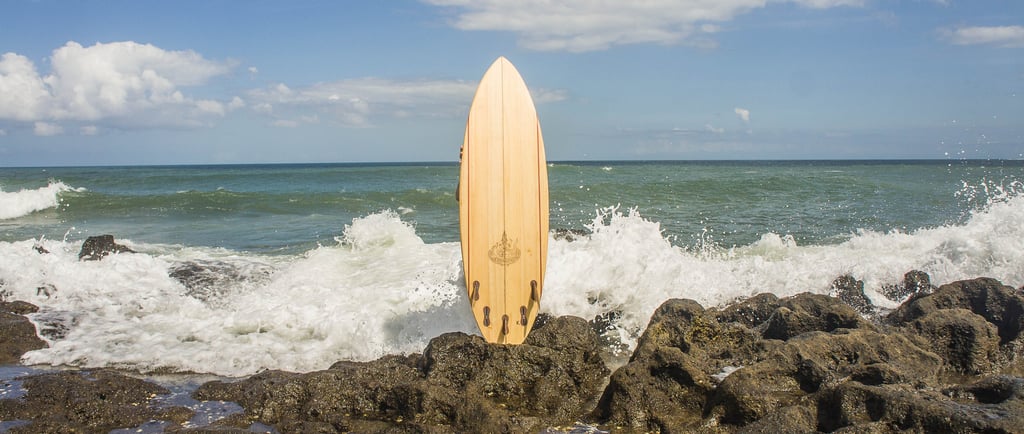Why Balsa Surfboards Are Better Than PU: The Ultimate Sustainable Choice
Discover why balsa surfboards outperform PU boards in performance, durability, and sustainability. Learn how these eco-friendly, lightweight boards offer a superior ride while reducing environmental impact. 🌊
Kayu Team
2/22/20252 min read


In the world of surfboards, the debate between balsa wood surfboards and polyurethane (PU) boards has been ongoing for years. While PU boards have dominated the surf industry for decades, balsa surfboards are making a strong comeback as the preferred choice for surfers who care about performance, sustainability, and durability.
If you’re considering upgrading your surfboard, here’s why balsa surfboards are better than PU.
1. Eco-Friendly & Sustainable Surfboards
One of the biggest advantages of balsa wood surfboards is their sustainability. Unlike PU boards, which are made from petroleum-based materials that contribute to pollution, balsa surfboards are crafted from fast-growing, biodegradable wood. Balsa trees grow quickly and can be sustainably harvested, making them a much more environmentally responsible choice.
Additionally, the production of PU surfboards releases volatile organic compounds (VOCs), which harm both the environment and the workers handling the materials. Balsa wood, on the other hand, requires minimal processing and has a much lower carbon footprint.
2. Stronger and More Durable
PU boards are known for being fragile, often developing dings, cracks, and yellowing over time. Balsa surfboards, however, are naturally stronger and more resistant to damage. The wood’s structure provides a high strength-to-weight ratio, making it lightweight yet incredibly durable.
A well-maintained balsa surfboard can last for years longer than a traditional PU board, saving you money and reducing waste in the long run.
3. Superior Flex and Performance
Balsa wood offers a unique flex pattern that mimics the responsiveness of traditional fiberglass boards while providing more natural buoyancy. The organic flex of balsa allows for smoother turns and better wave absorption, which enhances your overall surfing experience.
Many surfers who switch to balsa surfboards notice improved maneuverability and stability, making them a great option for both beginners and experienced surfers looking for an optimal ride.
4. Lightweight Yet Buoyant
A common misconception is that wooden surfboards are heavy. However, balsa wood is one of the lightest woods in the world, making it an excellent material for high-performance surfboards. Balsa boards provide better buoyancy than PU, helping surfers paddle faster and catch waves with ease.
5. Naturally Beautiful Aesthetic
Let’s face it – balsa surfboards look amazing. The natural grain and warm wood tones create a unique aesthetic that sets them apart from mass-produced PU boards. Whether you’re on the water or displaying your board at home, a handcrafted balsa surfboard is a work of art.
6. Better for Your Health
PU surfboards are made with chemicals that release harmful toxins during production and repair. In contrast, balsa surfboards are crafted with non-toxic, natural materials, making them a healthier option for both surfers and the craftsmen who build them.
Conclusion: Make the Switch to Balsa
If you’re looking for a surfboard that combines performance, durability, and sustainability, a balsa surfboard is the clear winner over traditional PU boards. Not only do they offer superior strength and flex, but they also help reduce environmental impact while providing a one-of-a-kind riding experience.
At Kayu Surfboards, we craft handmade balsa surfboards in Bali, using locally sourced, sustainable wood. Explore our collection and ride the waves with an eco-friendly surfboard that’s built to last.
Ready to go green with your surfing? Check out our latest balsa surfboard designs today!
Crafting eco-friendly surfboards for all surfers.
CONTACT US
quick get in touch
EMAIL: info@kayusurfboards.com
VISIT US: Jl. Pantai Berawa 101, Tibubeneng, Kec. Kuta Utara
OPENING HOURS: TUESDAY-SUNDAY 10AM-7PM
© 2024. All rights reserved.


